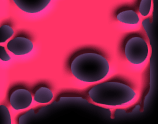Phonetics
Each individual symbol stands for a sound, not a solitary
letter. Unlike English, the Japanese alphabet remains constant in it's sound:
A - 'ah' (Mall)
E - 'eh'
(Red)
I - 'ee' (Sing)
O - 'oh' (Snow)
U - 'oo' (Blue)
Different sounds can
be paired together with various vowels to form a new sound as they blend. Some common ones:
AI - (Eye)
AO - (Cow)
EI - (Say)
OI - (Foil)
From there you should
be able to figure out which pairs make which sounds be experimenting.
Another common question is how to translate
a word that does not end in a vowel sound, since all of the symbols do. More often than not, ending a word with the symbol
that includes 'u' or 'o' will do the trick, since those sounds are generally silent at the end of a word (unless accentuated).
Note that when you hear a fluent speaker of Japanese, the words sound half spoken. This
is partly true. In most words or names, the "I" and "U" located in them are barely spoken, see the bottom of the page for
mo detail.
Names
Most people want to know their Japanese name. To do this, you sound
out your name. Here are some Examples:
John - Jon
Mary - Merii
Bob - Babu, Bobu
Brian - Buraian
Chris - Kurisu
Amber - Anberu
As you can tell, lots of the letters have changed, like in Mary, since the a sounds like 'eh', it was
changed to an e. In most of the names, a u has been added. Because very few constanents are next to eachother, a u is added,
like a silent e. The u does make a sound, but it is short and quiet.
Substitutions
The Japanese
phonetics do not include all of the sounds that the English language does. Often, a different (similar) sound will be used
to substitute:
Soft G - 'j' sounds
L - 'r' sounds
Q - 'ku'
V - 'b' sounds
X - 'kusu'
W - 'u'
Sentences
The Japanese language is a SOV (subject-object-verb) language, as is Korean. English
is a SVO (subject-verb-object) language, so are Spanish and French. The following sentences are in SOV order:
|
Romanji: |
Okaasan ga |
pan o |
kaimashita. |
|
English: |
Mother |
bread |
bought. |
|
Romanji: |
Jon-san ga |
sore o |
shimashita. |
|
English: |
John |
it |
did. |
|
Romanji: |
Otousan |
eiga o |
mimashita. |
|
English: |
Father |
the movie |
saw. |
The o in each of the sentences above are following a noun, so the o
is an object maker. The 'mashita' are almost coincidence, but 'shita' at the end of a word normally means it's a past tense
action. I believe shita itself is a noun.
Speaking a scentence
This is one of the best sentences to ever say when you're a beginner at Japanese, 'Do
you understand English?' Below is the order and wording of it.
Sentence: Eigo ga wakarimasu ka
Direct translation: English understand ?
'Eigo' is a compound word of (Ei) 'English'
and (Go) 'Language', so it means 'the English language'
'Ga' is a subject marker, which is usually wa.
A subject maker indicates what the sentence is about
'Wakarimasu' means 'understand'
'Ka' is a question mark
The sentence is pronounced like this: 'Ay-goh gah wah-kah-ree-mah-soo
kah'
Or for a seasoned speaker: 'Ay-goh gah wah-kah-r(ee)-mahs'
kah''
This an incomplete sentence because it's stating the obvious, no need to over explain
things in Japan. Adding 'do you' would complicate a simple question with a simple answer. Hai or Iie would be ideal but they
could also add 'wakarimasu' to it.
More:
Colors-
Black- Kuroi
Blue- Aoi
Green- Midori
Pink- Momoiro
Red- Akai
White-
Shiroi
Numbers-
One- Ichi
Two- Ni
Three- San
Four- Shi
Five- Go
Six-
Roku
Seven- Shichi
Eight- Juu Inchi
Nine- Kyuu
Ten- Juu
Eleven- Juu Inchi
Twenty- Ni Juu
Animals-
Bird- Tori
Cat- Neko
Chicken- Niwatori
Cow- Ushi
Crab-
Kani
Dog- Inu
Duck- Ahiru
Ferret- Shiroitachi
Fish- Sakana
Fly- Hae
Fox- Kitsume
Goose- Gacho
Horse-
Uma
Lobster- Ise-ebi
Octopus- Tako
Oyster- Kaki
Pig- Buta
Pigeon- Hato
Racoon- Tanuki
Squid- Iku
Trout-
Masu
Wolf- Okami
Family-
Daugther- Musume
Father- Chichi
Husband-
Shujin
Mother- haha
Older Brother- Ani
Older Sister- Ane
Son- Musuko
Wife- Kanai
Younger Brother- Otohto
Younger
Sister- Imohto

